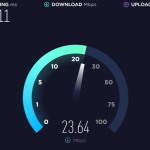
Content marketing is a strategic approach to creating and distributing valuable, relevant, and consistent content to attract and retain a clearly defined audience and drive profitable customer action. It is important for businesses because it helps establish their brand authority, build trust with customers, improve SEO rankings, generate leads, and ultimately increase conversions. In today’s digital age, where consumers have access to a wealth of information online, effective content marketing can be the key to standing out from the competition and reaching your target audience.
Defining Content Marketing
Content marketing is an often-used buzzword in the digital marketing sphere, but what does it really mean? At its core, content marketing is a strategic approach to creating and sharing valuable, relevant, and consistent content to attract and retain a clearly defined audience. The goal is to ultimately drive profitable customer action through building brand awareness and trust.
Analogously speaking, content marketing can be thought of as a conversation between your business and your customers. You’re not just shouting about your products or services; you’re providing useful information, answering questions, and fostering a sense of community. By doing so, you’re building relationships with potential customers rather than just attempting to make a sale.
Content marketing is different from traditional marketing tactics in that it’s not direct sales-driven. Instead, it takes a more holistic approach by focusing on providing value to potential customers at every stage of the buyer journey. For example, you may create blog posts that answer common questions your target audience has before they even know they need your product or service.
Ultimately, the main goal of content marketing is to foster long-term relationships with customers by providing value over time. Instead of focusing solely on selling a product or service, the focus shifts to providing useful information that helps build trust and credibility with potential customers.
Now that we have a better understanding of what content marketing is, let’s take a closer look at the core principles and objectives behind this approach.
Content marketing is a strategic approach that focuses on creating and sharing valuable, relevant, and consistent content to attract and retain a clearly defined audience. It differs from traditional marketing tactics in that it’s not solely driven by direct sales. Instead, it takes a more holistic approach by providing value to potential customers at every stage of the buyer journey, with the ultimate goal of fostering long-term relationships built on trust and credibility. As businesses shift their focus towards building these relationships, it’s important to understand the core principles and objectives behind content marketing.
Core Principles and Objectives
Content marketing isn’t just about creating random pieces of content and hoping for the best. To truly be successful at content marketing, there are certain principles and objectives that must be followed.
One key principle of content marketing is relevance. Your content must be tailored to your target audience’s needs and interests if you want them to engage with it. This ties into another principle: consistency. To build trust with your audience, you must consistently provide value through informative and relevant content.
At its core, the objective of content marketing is to drive profitable customer action. This may be in the form of increased website traffic, higher conversion rates, or more sales. However, it’s important to remember that this doesn’t happen overnight. Successful content marketing takes time and effort to see results.
One analogy that can be used to illustrate the principles and objectives of content marketing is a puzzle. Each piece of content is like a puzzle piece that fits together to form a larger picture – your overall content strategy. By providing valuable and consistent pieces of content over time, you ultimately create a complete picture that drives profitable customer action.
Additionally, successful content marketing relies on understanding your audience and their needs. This ties into the segmentation principle mentioned earlier – if you don’t know who your audience is or what they’re interested in, you won’t be able to create effective content. By taking the time to research and understand your target audience, you can tailor your content to their specific needs and interests.
Content Marketing Formats
When it comes to content marketing, there are various formats available for businesses to choose from. Depending on the business objectives and target audience, one format might be more effective than another. The success of a content marketing campaign is determined by the type of format used and how it resonates with the intended audience.
A company that sells high-end audio equipment may leverage audio formats like podcasts or sound bites to showcase their top-quality products. In contrast, a fashion retailer may benefit more from visual formats such as photos or videos.
Online written content such as blogs, articles, and whitepapers is ideal for providing in-depth information on topics. It can help position a brand or company as an expert in their industry while also being optimized for search engines to rank higher on search results pages. Visual content comprising infographics, images, and videos provide an opportunity for brands to engage with audiences across multiple channels. Interactive content like quizzes and surveys encourage customer participation and hold their attention longer.
Although social media platforms offer several forms of content marketing formats – including paid ads and sponsored posts – they have limited space for sharing detailed content. While they’re great for promoting visual images and engagement through likes or shares, it’s important to consider incorporating social media into an overall strategy rather than solely relying on it as your primary source of outreach.
In the next section, we’ll dive deeper into written, visual, and audio content formats as part of a successful content marketing strategy.
Written, Visual, and Audio Content
Written Content: Well-written blog posts can communicate a keen understanding of industry topics that interest your customers while entertaining them at the same time. White papers presenting new discoveries or innovative solutions to old problems add credibility to thought leadership efforts.
Take Procter & Gamble’s approach to promoting their cleaning solutions. In place of simply trying to sell their products, they created a website with engaging written content intended to provide useful tips on household cleaning.
Visual Content: According to a report from HubSpot, 54% of consumers prefer videos that demonstrate how a product is used or highlight company culture. Visual content can engage consumers by offering a fresh perspective that complements written content. Examples include infographics for summarizing complex information into easy-to-understand visuals, and interactive charts to help readers explore data easily.
Think of visual content as the cake and written content as the frosting – both separately have value, but combined together they create something even better.
Audio Content: Podcasts are a great medium for reaching audiences who enjoy multitasking while doing other things like commuting or working out. This format enables businesses to showcase their expertise whilst entertaining audiences with stories and humor.
One example is Shopify’s podcast “TGIM,” hosted by an entrepreneur and comedian that explores the ins-and-outs of running a business in today’s digital landscape.
Interactive and Social Media Content
Interactive and social media content have become essential components of any successful content marketing campaign. As a business, you can take advantage of these formats to create engaging experiences that attract and retain customers.
Interactive content engages your audience by involving them in the content creation process. It could be anything from quizzes and surveys to calculators and games. For example, skincare brand Glossier created an interactive quiz that helps customers find the perfect shade of lipstick for their skin tone. The quiz generated over 1.5 million views within three months of its launch, making it one of the company’s most successful campaigns.
On the other hand, social media content is about producing shareable content that resonates with your audience. It could include anything from memes and GIFs to videos and photos. Many companies like Nike use social media platforms such as Instagram to feature user-generated content, inspiring their followers while promoting their brand at the same time.
Another great example is Wendy’s Twitter account which has gained notoriety for its witty responses to customer inquiries. The fast-food chain uses humor and pop culture references to engage with its audience, resulting in increased brand awareness and customer loyalty.
While interactive and social media content are effective tools for engagement, they require constant monitoring and analysis to ensure success. Regularly checking engagement metrics on platforms like Google Analytics or Facebook Insights can help you optimize your campaigns.
Crafting Engaging Content Strategies
Creating engaging content is no easy feat, but it’s essential if you want to connect with your target audience effectively. Crafting an effective content strategy involves understanding your audience, developing clear objectives, and choosing the right formats.
Before creating any content, it’s important to conduct thorough research into your target demographic to understand their interests, pain points, and values. By understanding what motivates your audience, you can craft copy that speaks directly to them. This information can be gathered through surveys, focus groups, and social listening.
Once you’ve established your audience, it’s time to set clear objectives that align with your business goals. Whether the goal is to increase website traffic or improve lead conversion, each piece of content should serve a specific purpose.
When it comes to formats, consider what best suits your audience and objectives. Written formats such as blog posts and whitepapers are great for educating readers on complicated topics, while visual formats like infographics and videos help simplify complex ideas. Interactive content engages audiences by involving them in the creation process.
For example, statistics show that more than 80% of consumers prefer video over written content when learning about products and services. Meanwhile, interactive content generates two times more conversions than passive content like blog posts.
Lastly, remember that crafting engaging content requires an ongoing process of testing and refining. Set up A/B tests to measure which headlines, copy, and visuals resonate with your audience best. Use this data to optimize future campaigns for better engagement and higher ROI.









